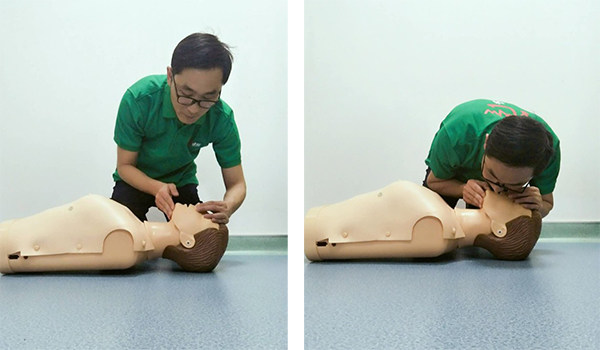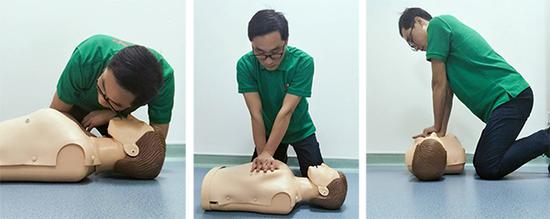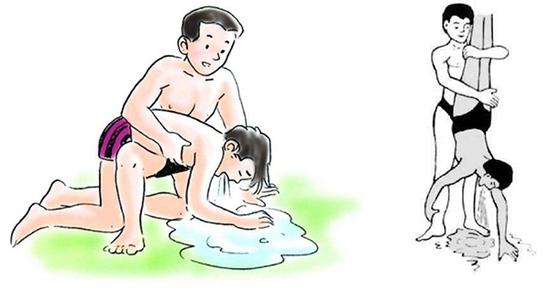When Sheng Xia arrives, more and more parents will choose to take their babies swimming. It not only relieves heat, but also exercises. However, there are some potential dangers in both indoor swimming pools and public waters. This requires parents to pay attention to some safety problems of baby swimming and master some first-aid knowledge.
On May 17, Ms. Zhang from Quanzhou, Fujian, took her 7-month-old baby swimming in the mother baby shop. He left for two minutes because he wanted to buy milk powder in the middle of the journey. During this time, the baby leaned forward and fell into the water. About 46 seconds after the child fell into the water, the staff found out and took him out of the swimming pool. According to the monitoring video of the mother and baby store, after the baby was rescued, the staff immediately slapped the baby on the back, so that the baby could spit out the choked water. Later, Ms. Zhang sent the baby to the hospital for examination. Fortunately, the baby's life was not in danger.
Last week, a 9-year-old boy was not so lucky. On May 14, a 9-year-old Shanghai boy drowned while swimming in the Haimingzhu Bathing Beach located at 750 Meizhou Road. When the drowning child was sent to the nearby Xinhua Hospital after being rescued ashore, his heart beat and breath were gone when he was admitted to the hospital. He was saved for two days and was still in critical condition.
Ge Qinmin, Deputy Chief Physician of Emergency Medicine Department of Xinhua Hospital Affiliated to Shanghai Jiaotong University Medical College, said in an interview with the media that once a child drowns, the first witness will find and rescue in time, which will play a key role in the prognosis of the disease.
Rescue gold: do artificial respiration in 4 minutes
When children swim, parents should always be around. In addition, before swimming, parents should first observe the physical condition of the child and see if there is any discomfort. Children should also be guided to warm up and stretch, and not to swim in places with unknown water conditions.
So what should we do if children are found drowning? Liu Xiaolu, an emergency doctor at the Minhang District Hospital of Traditional Chinese Medicine in Shanghai, said that in the water with a depth of more than 5cm, facial immersion for two minutes can lead to suffocation. Irreversible brain damage will occur within 10 minutes, leading to sequelae and brain death. "In case of drowning, the earlier you find it, the better. The golden time for rescue is 4 minutes. However, drowning is special. Even if it is more than 10 minutes, you should insist on cardiopulmonary resuscitation until medical staff arrive."
Liu Xiaolu said that when a child was found drowning, the first witness should rescue the child in time, and call 120 for help while giving first aid. First, keep his body lying flat, then turn his head sideways to remove foreign bodies in his mouth and nose. Perform 2 artificial respiration first, evaluate whether there is heartbeat breathing, and if there is no normal breathing, perform external chest compression.
Liu Xiaolu demonstrated the method of artificial respiration: put one hand against the rescued person's forehead and hold his nose, raise his chin with the other hand, and completely wrap his mouth around the rescued person's mouth to blow until he saw the chest of the rescued person bulge. Each time lasts for 1 second.
Perform chest compressions at the speed of 100 to 120 times/minute, which is simply 2 times per second. 30 times of pressing shall be divided into one group, and then evaluate whether the rescued person has breath and heartbeat. Artificial respiration and chest compressions are carried out alternately at a frequency of 2:30 until the rescued person breathes or medical staff arrives.
Liu Xiaolu demonstrated the method of chest compression: find the midpoint of the line between the two nipples of the rescued person, overlap the other hand on the back of the hand, cross the fingers, adopt a kneeling posture, straighten the biaxial joints, and press vertically downward with the strength of the upper body.
In terms of the press depth, for children from 1 year old to adolescence, the press depth should be 4-5cm. For infants less than 1 year old, the press depth should be one third of their chest anteroposterior diameter, and press with two fingers. The compression depth of adults is generally 5-6cm.
In addition, if there are other people around during the rescue, one person should be assigned to obtain the AED (Automatic External Defibrillator) as soon as possible. When the rescued person has ventricular fibrillation, defibrillation shall be carried out in time. Special reminder: Search for AED in Alipay APP to get the nearest AED location.
Finally, Liu Xiaolu also said that if it was choking water, it would be better to clap it on the back with a hollow palm. He also stressed that no form of water control is required for drowning or choking. First, water control will delay the precious time to restore ventilation; second, water control will increase the risk of secondary asphyxia caused by vomit inhalation.
Error View
I hope that not only parents but also everyone can learn these first aid knowledge. If you call 120 when an accident occurs, you can give first aid at the same time, which will reduce the brain damage of drowning children as much as possible. Yang Sichao







